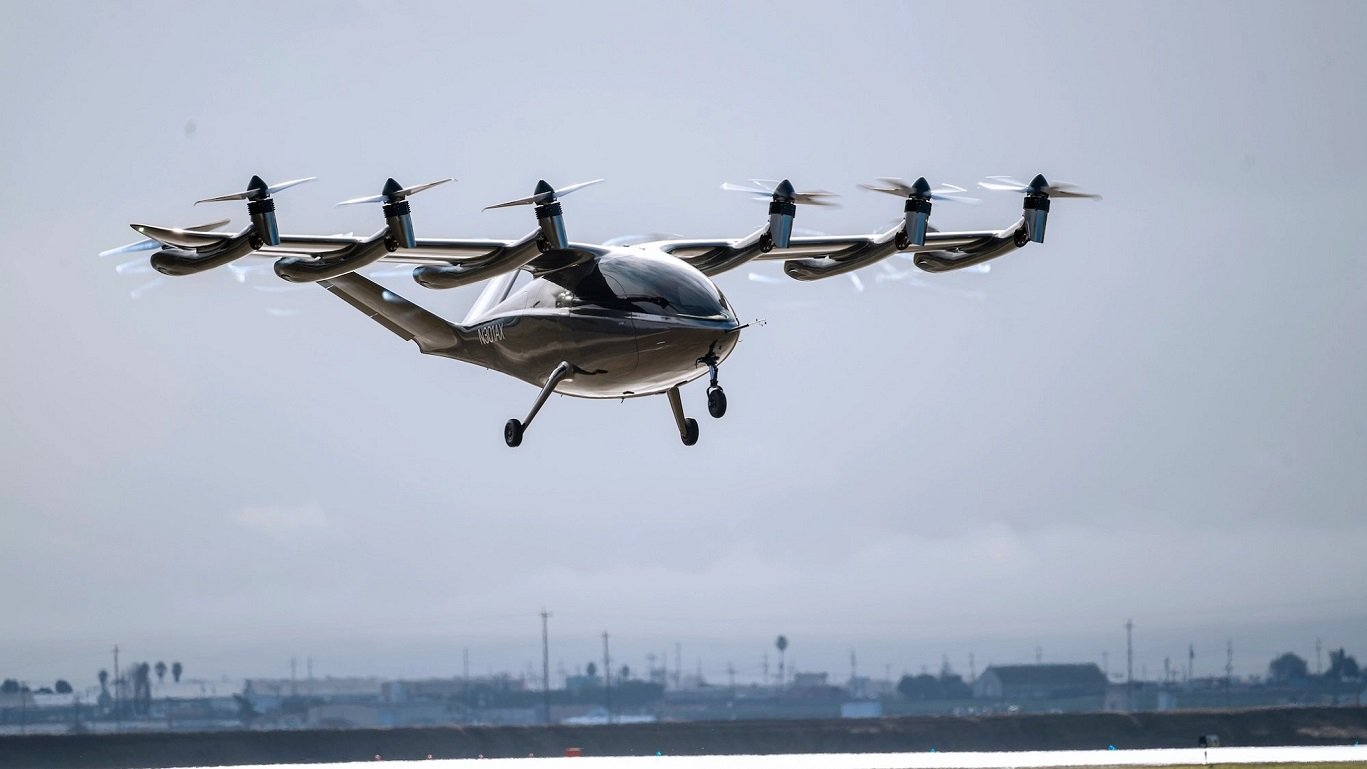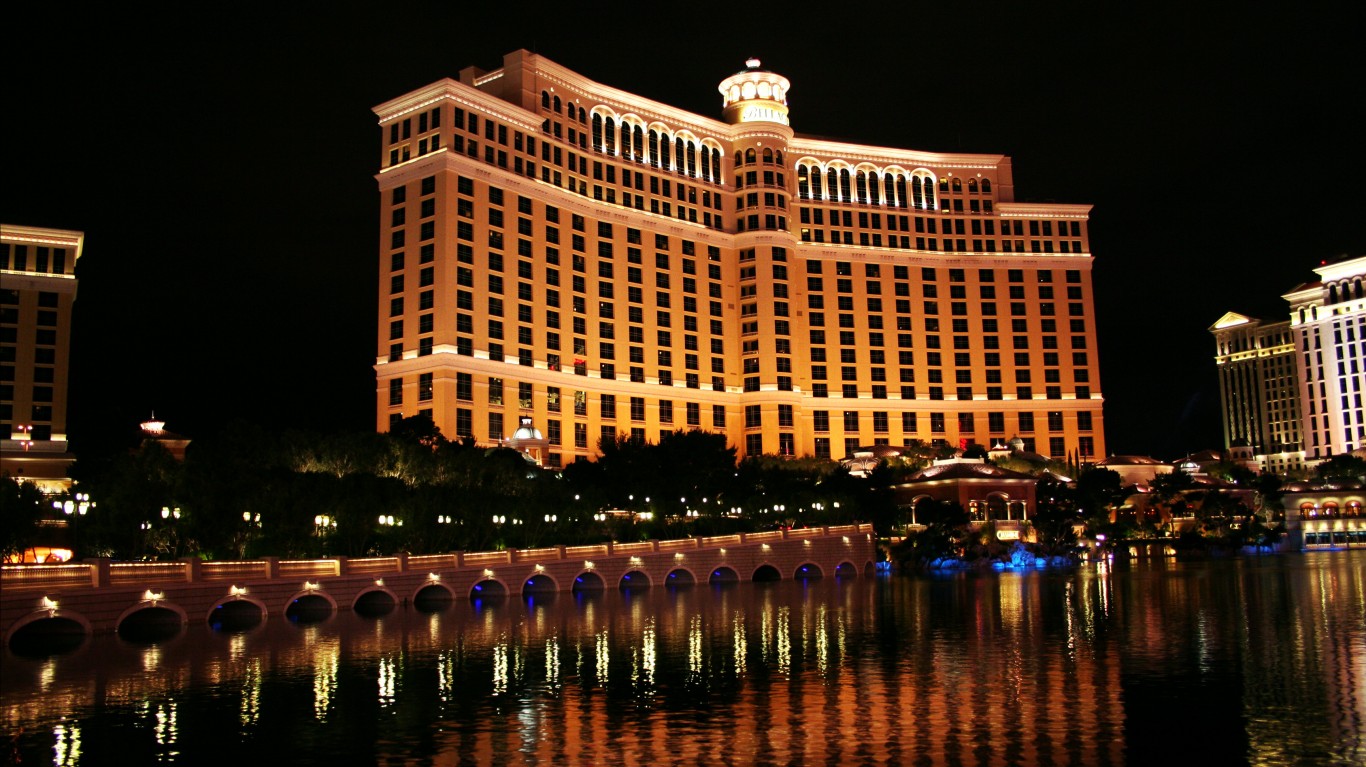

An estimated 200 companies around the world are working on building electric aircraft or some significant subsystem like hydrogen-driven power trains. Analysts at UBS have estimated that a full 25% of the civil aviation industry will be hybrid or fully electric by 2035.
This is important because airplane emissions are expected to triple by 2050 if airlines don’t figure out a way to eliminate fossil fuel-powered jets. That is even worse than the exact opposite of a U.N. goal for net-zero aircraft industry emissions by 2050.
Air taxi service Blade Mobility already offers short-hop helicopter flights from Manhattan to New York City’s airports, with plans to transition to the company’s electric vertical take-off and landing (eVTOL) aircraft by 2025. Electric aircraft capable of longer flights remain in different stages of development.
Analysts Bill Peterson and Mahima Kakani of J.P. Morgan Securities have just initiated coverage of three eVTOL companies that plan to offer their own services and sell their aircraft to existing commercial operators. Investing in these companies is not for the risk averse. The analysts warn that these investments “[require] patience and a high risk tolerance, in our view, given largely unproven business models, certification risk, and risks associated with lower-than-expected adoption rates, including as a result of competition.”
Within the next decade, Peterson and Kakani write that the eVTOL market could be worth more than the $35 billion helicopter business and that the market size could reach $1 trillion in the “longer term.”
That said, Peterson and Kakani give Archer Aviation Inc. (NYSE: ACHR) an Overweight rating and a December 2022 price target of $7. Shares are trading at around $4.20, implying an upside potential of 67%. The stock was up about 14% Thursday, likely due to the rating. The price target is based on future-dated sales and “profitability dated back to 2023” and the potential size of the total available market.
J.P. Morgan initiated coverage on Blade Mobility in September of last year with an Overweight rating and a price target of $16. The stock traded at around $8.70 Thursday morning.
According to Morgan’s analysts, Archer “with a stronger balance sheet than those of most peers, is well-positioned to execute on its strategy and overcome such obstacles and is undervalued relative to peers.”
Two of Cathie Wood’s ARK ETFs (ARKQ and ARKX) own about 5.6% of Archer’s outstanding shares and are the top holders of the company’s stock. United Airlines has agreed to purchase $1 billion worth of Archer’s aircraft, with a later option on another $500 million worth.
Archer expects to be able to transport a passenger from Manhattan to JFK Airport in 22 minutes at a cost of $50. The company estimates that Uber X would cost $75 for a 70-minute trip and Uber pool would cost $59 for a 77-minute trip. A Blade helicopter trip costs $1,775, though the cost would fall to around $200 when Blade gets its eVTOL aircraft flying. The helicopter and eVTOL trips by Blade or Archer would take 22 minutes.
Peterson and Kakani initiated coverage of Joby Aviation Inc. (NYSE: JOBY) with a Neutral rating and a year-end price target of $7. The stock traded at around $4.95 Thursday morning, implying an upside potential of 41.4%. As with Archer, the price target is based on discounted future sales and profitability and the size of the total available market. Both Joby and Archer are located in California.
Joby has partnerships and other agreements with Uber, Toyota, JetBlue and Japan’s ANA, among others. The company’s second pre-production eVTOL received its Federal Aviation Administration (FAA) airworthiness certificate last December, and Joby expects its first four-passenger aircraft to begin operations in 2024 when it receives the FAA’s final type certification.
Peterson and Kakani started coverage of Germany-based Lilium N.V. (NASDAQ: LILM) with a Neutral rating and a December 2022 price target of $5. A recent trading price of around $2.95 implies an upside potential of 64.5%. The price target is based on the same criteria as Archer’s and Joby’s.
Also like Archer and Joby, Lilium plans to sell or lease its eVTOL aircraft to commercial customers and work with partners on its own network. The company intends to achieve certification from both the FAA and the European Aviation Safety Agency (EASA), which would expand its total available market size.
The company’s first aircraft, the Lilium Jet, is capable of flying 186 miles at a top speed of 186 mph. It can be configured to carry six passengers or allow 210 cubic feet of cargo space. Lilium has a $1 billion deal to co-develop an eVTOL network throughout Brazil with the country’s Azul Airlines. Honeywell is investing in a PIPE (public investment in private equity) offering and providing avionics and flight control systems for the Lilium Jet. Technology firm Palantir is investing $41 million in a PIPE deal as well.
The company’s key U.S. market is Miami where it will be competing with Blade and Archer. Short-seller Iceberg Research recently issued a report questioning the company’s aircraft and its business. J.P. Morgan’s analysts say a Securities and Exchange Commission is “likely to follow” in two to three months to investigate the claims.
Finally, here is a brief look at a few electric aircraft companies that are not yet publicly traded.
San Francisco-based Airflow is working on an electric short take-off and landing (eSTOL) aircraft capable of carrying nine passengers or one ton of cargo.
Vermont-based Beta Technologies is developing an eVTOL for the cargo and logistics industry. Amazon has invested in the company through the e-commerce giant’s Climate Pledge Fund.
Sweden’s Heart Aerospace is working on a 19-passenger electric airplane that can travel 250 miles. United Airlines and Mesa Air have ordered 200 of the aircraft.
Universal Hydrogen is a Los Angeles-based company developing a modular capsule technology that enables operators to replace their fossil-fuel-powered engines with hydrogen-electric powertrains.
Wright Electric is based in New York and currently is developing its first electric aircraft, the Wright Spirit, which is intended to fly 100 passengers on a one-hour flight by 2026. A larger 186-passenger Wright 1 will follow in 2030. The Wright 1 is being designed to fly 800 miles.
ZeroAvia was founded in California and moved to England last year. The company’s hydrogen-electric propulsion system is aimed at the market for a 10-seat to 20-seat aircraft capable of flying 500 miles. Amazon’s Climate Pledge Fund, United Airlines, Alaska Air and other big names have invested in the firm that expects to commercialize its products beginning in 2024.
Essential Tips for Investing: Sponsored
A financial advisor can help you understand the advantages and disadvantages of investment properties. Finding a qualified financial advisor doesn’t have to be hard. SmartAsset’s free tool matches you with up to three financial advisors who serve your area, and you can interview your advisor matches at no cost to decide which one is right for you. If you’re ready to find an advisor who can help you achieve your financial goals, get started now.
Investing in real estate can diversify your portfolio. But expanding your horizons may add additional costs. If you’re an investor looking to minimize expenses, consider checking out online brokerages. They often offer low investment fees, helping you maximize your profit.
Thank you for reading! Have some feedback for us?
Contact the 24/7 Wall St. editorial team.
 24/7 Wall St.
24/7 Wall St.


